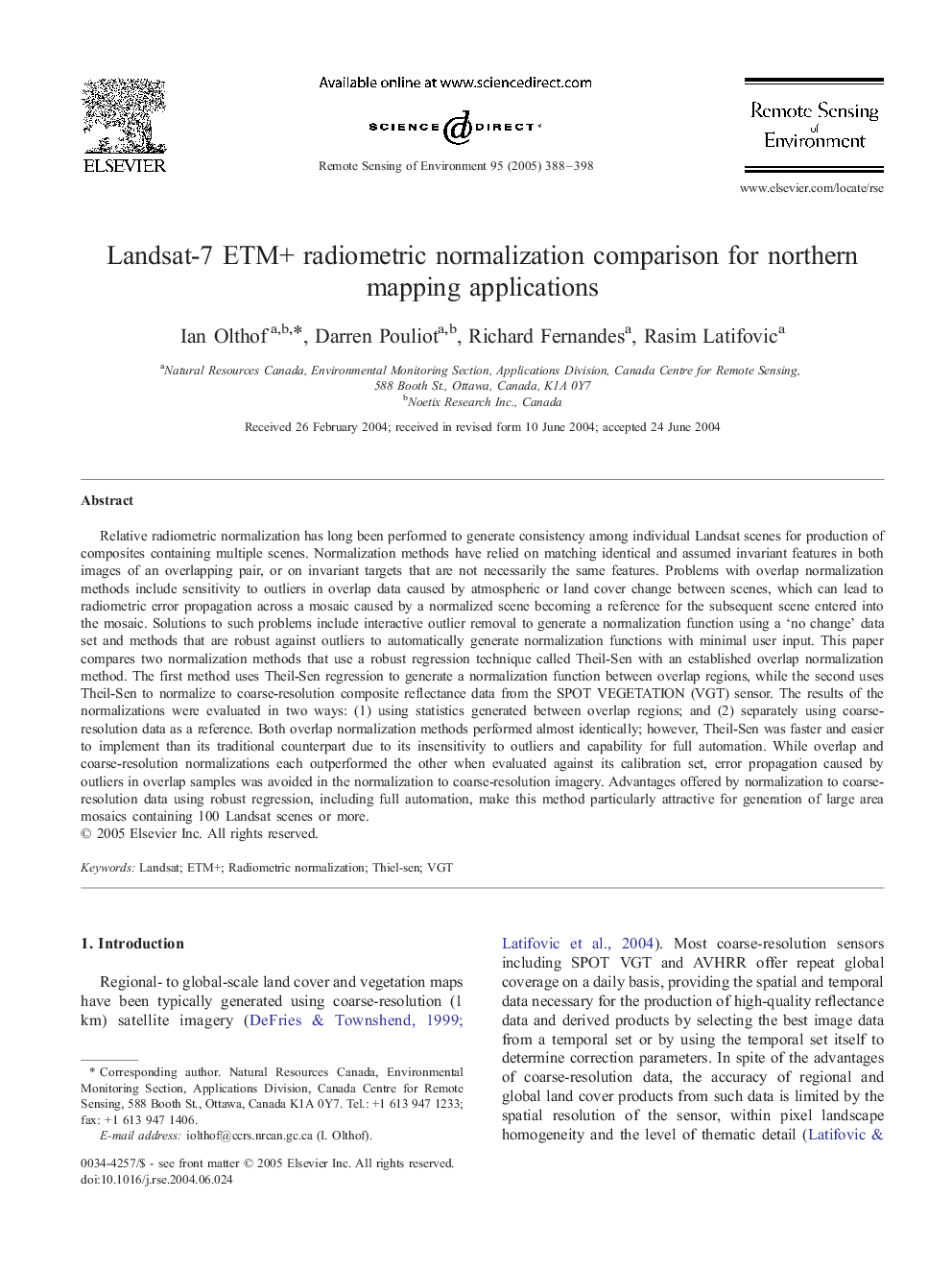| Article ID | Journal | Published Year | Pages | File Type |
|---|---|---|---|---|
| 10114275 | Remote Sensing of Environment | 2005 | 11 Pages |
Abstract
Relative radiometric normalization has long been performed to generate consistency among individual Landsat scenes for production of composites containing multiple scenes. Normalization methods have relied on matching identical and assumed invariant features in both images of an overlapping pair, or on invariant targets that are not necessarily the same features. Problems with overlap normalization methods include sensitivity to outliers in overlap data caused by atmospheric or land cover change between scenes, which can lead to radiometric error propagation across a mosaic caused by a normalized scene becoming a reference for the subsequent scene entered into the mosaic. Solutions to such problems include interactive outlier removal to generate a normalization function using a 'no change' data set and methods that are robust against outliers to automatically generate normalization functions with minimal user input. This paper compares two normalization methods that use a robust regression technique called Theil-Sen with an established overlap normalization method. The first method uses Theil-Sen regression to generate a normalization function between overlap regions, while the second uses Theil-Sen to normalize to coarse-resolution composite reflectance data from the SPOT VEGETATION (VGT) sensor. The results of the normalizations were evaluated in two ways: (1) using statistics generated between overlap regions; and (2) separately using coarse-resolution data as a reference. Both overlap normalization methods performed almost identically; however, Theil-Sen was faster and easier to implement than its traditional counterpart due to its insensitivity to outliers and capability for full automation. While overlap and coarse-resolution normalizations each outperformed the other when evaluated against its calibration set, error propagation caused by outliers in overlap samples was avoided in the normalization to coarse-resolution imagery. Advantages offered by normalization to coarse-resolution data using robust regression, including full automation, make this method particularly attractive for generation of large area mosaics containing 100 Landsat scenes or more.
Related Topics
Physical Sciences and Engineering
Earth and Planetary Sciences
Computers in Earth Sciences
Authors
Ian Olthof, Darren Pouliot, Richard Fernandes, Rasim Latifovic,
